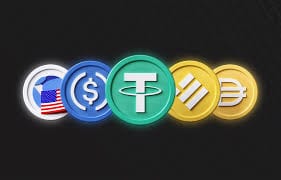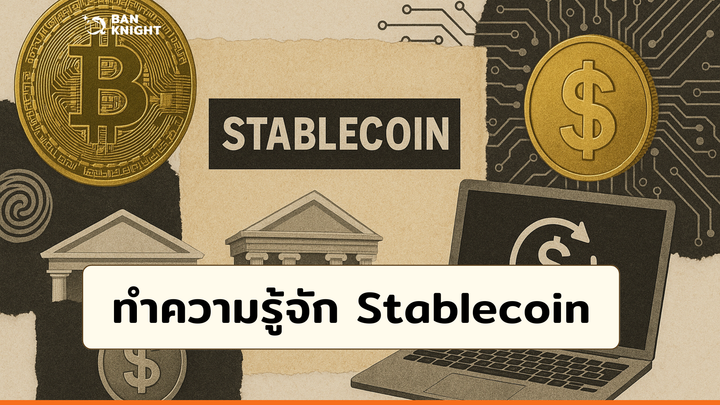The Bridge Between Traditional Money and the Volatile Crypto Market

How can a currency be practical for everyday transactions, reliable for saving, or stable enough for loans if its value can dramatically shift in a matter of hours?
Why Stablecoins Matter to YOU
Imagine trying to buy groceries with an asset that might be worth half as much by tomorrow, or building a business on a currency whose stability is constantly in question. For all its revolutionary potential, crypto's inherent volatility has long been a barrier to its widespread adoption beyond speculative trading.
The world of cryptocurrency is a whirlwind of innovation, opportunity, and often, exhilarating volatility. Remember when Bitcoin soared past $69,000, only to dip sharply within weeks? Or the dramatic pumps and equally dramatic dumps of various altcoins that dominate crypto headlines? This digital asset market offers a thrilling, often life-changing ride for traders and investors alike, but it also comes with significant risks that can wipe out fortunes as quickly as they're made.
This is where stablecoins emerge as a crucial innovation. These cryptocurrencies are ingeniously designed to counter the market's famous swings, offering a digital asset that maintains a stable value, typically pegged to traditional currencies like the US Dollar. In essence, stablecoins act as the vital bridge, connecting the dynamic, decentralized crypto space with the stability and predictability of the traditional financial world.
In this article, we'll dive deep into what stablecoins are, explore the different mechanisms they use to maintain their peg, and uncover why they've become an indispensable part of the modern crypto ecosystem. We'll also shed light on the inherent risks and the evolving regulatory landscape surrounding them, giving you a comprehensive understanding of these essential digital assets and their promising future.

Stablecoins 101
At its core, a stablecoin is a type of cryptocurrency specifically designed to maintain a stable value. Unlike Bitcoin or Ethereum, whose prices fluctuate based on market demand, stablecoins are typically pegged 1:1 to a less volatile asset, most commonly a fiat currency like the US Dollar
So, why exactly are these seemingly "boring" digital assets so essential in a market celebrated for its dynamism?
Why They're Needed: Anchoring the Digital Economy
The answer lies in practicality. While volatility can be exhilarating for speculation, it's a significant hurdle for everyday financial activities. Stablecoins solve this by providing critical stability for various use cases:
- Trading: For active crypto traders, stablecoins are indispensable. When the market turns bearish, or a trader wants to lock in profits from a successful altcoin pump without cashing out to traditional fiat currency (which can be slow and incur fees), they can quickly convert their volatile crypto into stablecoins. This allows them to move their funds safely within the crypto ecosystem, ready to jump back into a new opportunity without missing out.
- DeFi (Decentralized Finance) : stablecoins are the very backbone of the DeFi (Decentralized Finance) sector. Platforms for lending, borrowing, and yield farming rely heavily on assets with stable values. Imagine taking out a loan or providing liquidity with collateral that could halve in value overnight – it would be too risky for all parties. Stablecoins provide the necessary stability for these operations, allowing users to earn passive income, take out loans, or participate in complex financial instruments with reduced price risk. They enable a vast ecosystem of financial services to function reliably on the blockchain.
- Payments: Beyond trading and DeFi (Decentralized Finance), stablecoins make crypto payments viable for daily use. Paying for goods and services, sending remittances across borders, or even managing payroll becomes practical when you know the value of your digital currency won't drastically change by the time the transaction settles. This stability is key to bridging the gap between niche crypto adoption and mainstream everyday utility, pushing us closer to a truly digital economy.

How Stablecoins Keep Their Peg
Not all stablecoins are created equal. While their goal is the same towards maintaining a stable value, the methods they employ to achieve this can vary significantly. Each coming with its own set of strengths and weaknesses. Understanding these underlying mechanisms is key to appreciating their reliability and the risks you might encounter.
- Mechanism: Imagine a company holding $100 million in a bank. They then issue 100 million stablecoin tokens on a blockchain. Each token is theoretically redeemable for $1 from those reserves. This direct, 1:1 backing aims to ensure stability.
- Examples: The two giants in this space are USDT (Tether) and USDC (USD Coin).
- Pros for Users:Widely Accepted: Because of their simplicity and perceived reliability, they are accepted on almost every crypto exchange and DeFi platform.High Liquidity: You can easily buy or sell large amounts without significantly impacting their price.Generally Reliable: For the most part, they have proven effective in maintaining their peg through various market conditions.
- Cons for Users:Centralization Risk: You are trusting a central entity (the issuer) to hold the reserves responsibly and transparently. If that entity fails, is hacked, or acts maliciously, your stablecoins could lose their value.Transparency Concerns: Historically, some issuers have faced criticism for not providing real-time, comprehensive audits of their reserves, leading to questions about whether they truly hold 1:1 backing at all times.Potential for Censorship: Being centralized, the issuer can theoretically freeze or blacklist certain addresses, impacting user freedom.
- Fiat-Backed Stablecoins (The Centralized Giants)
These are the most common and straightforward type of stablecoin. They operate on a simple premise: for every digital stablecoin issued, a corresponding unit of traditional fiat currency (US Dollar) is held in a real-world bank account as collateral.
The two giants in this space are USDT (Tether) and USDC (USD Coin)
- Crypto-Backed Stablecoins (The Decentralized Innovators)
These stablecoins aim to achieve stability without relying on traditional financial institutions. Instead, they use other cryptocurrencies as collateral, locked away in transparent, immutable smart contracts.
- Algorithmic Stablecoins (The High-Risk Experimenters)
These are the most ambitious and, historically, the riskiest type of stablecoin. They attempt to maintain their peg purely through supply-and-demand algorithms managed by smart contracts, with little or no traditional collateral.

Why Stablecoins Are Indispensable in Your Crypto Journey
Beyond just existing, stablecoins have woven themselves into the very fabric of the crypto ecosystem, becoming indispensable tools for traders, investors, and everyday users alike. They are the workhorses that enable a vast array of activities, making the digital economy more accessible and efficient.
Easy On/Off-Ramps: Simplifying Your Crypto Journey
Stablecoins also act as seamless on- and off-ramps between the traditional financial world and the crypto market. For newcomers, they often provide the first step into crypto, allowing them to purchase a stable digital asset without immediately diving into the complexities of volatile cryptocurrencies. For seasoned users, they offer a quick and efficient way to convert crypto gains into a stable value, or vice-versa, allowing for smooth transitions without the friction often associated with direct fiat conversions.
Store of Value (Temporary Safe Haven): Riding Out the Storms
When the broader crypto market experiences a significant downturn – a "bear market" or a sharp correction – stablecoins become the immediate safe haven for many. Instead of selling all their crypto back to fiat and incurring taxes or withdrawal fees, users can quickly convert their volatile assets into stablecoins. This allows them to effectively "wait out the storm" within the crypto ecosystem, protecting their capital from further depreciation while remaining liquid and ready to reinvest when market conditions improve. It's a strategic move to preserve wealth in volatile times.

The Road Ahead: Risks, Regulations, and the Future of Stablecoins
While stablecoins have proven to be incredible tools in the crypto world, it's important to remember that no asset is entirely without risk, and their future is constantly being shaped by technological innovation and governmental oversight. Understanding these dynamics is key to navigating the stablecoin landscape wisely.
De-pegging Risk: Not Always 1:1
Even the most robust stablecoins, especially those backed by fiat currency, aren't immune to temporary wobbles. In moments of extreme market stress, panic selling, or liquidity crunch, a stablecoin can temporarily "de-peg" – meaning its price drops below its intended $1.00 value. While major fiat-backed stablecoins typically recover their peg, these events can cause concern and create arbitrage opportunities or temporary losses for users. As we saw with the catastrophic collapse of algorithmic stablecoins like UST, the risk of a permanent de-peg is very real if the underlying mechanism fails fundamentally.
Regulatory Scrutiny: The Eye of Governments
Governments and financial regulators worldwide are paying increasingly close attention to stablecoins. Why? Because their potential for widespread adoption brings significant implications for financial stability, consumer protection, and anti-money laundering (AML) efforts. What does this mean for you, the crypto user?
- KYC Requirements: Expect more stringent Know Your Customer (KYC) requirements when dealing with regulated stablecoin issuers.
- Potential Restrictions: Depending on jurisdiction, there could be restrictions on who can issue or use certain stablecoins, or how they can be used.
- Clarity vs. Control: While clearer regulations could bring more legitimacy and institutional adoption to stablecoins, they also run the risk of introducing more centralization and oversight, potentially diminishing some of crypto's core tenets like privacy and permissionless access.
CBDCs vs. Stablecoins: A Future Coexistence or Competition?
Looking ahead, Central Bank Digital Currencies (CBDCs) — digital versions of national currencies issued and controlled by central banks — are on the horizon. This raises questions about their relationship with private stablecoins. Will CBDCs compete directly with stablecoins? Or perhaps offering a state-backed alternative for digital payments? Or will they complement each other, with stablecoins continuing to thrive in decentralized finance and specialized use cases while CBDCs handle broader retail payments? The answer will likely vary by country and regulatory approach, shaping the future landscape of digital money.
Innovation & Evolution: The Road Ahead
The stablecoin landscape isn't static. We're likely to see continued innovation, including:
- Increased Decentralization: Efforts to create more robust, decentralized stablecoins that don't rely on centralized entities or complex algorithmic models.
- Multi-Currency Baskets: Stablecoins pegged to a basket of currencies or even other assets, offering broader stability.
- Tokenized Real-World Assets (RWAs): The potential for stablecoins to bridge with tokenized versions of real-world assets like bonds or equities, further blending traditional finance with blockchain.
- New Stability Mechanisms: Ongoing research into novel approaches to maintaining peg stability that avoid past pitfalls.
Conclusion: Stablecoins - Anchors of the New Economy
As we've explored, stablecoins are far more than just a less volatile alternative in the fast-paced crypto market. They represent a critical innovation that genuinely bridges the gap between the traditional financial system and the decentralized world of blockchain. By offering the digital efficiency of cryptocurrencies with the reassuring stability of fiat currencies, stablecoins have become absolutely crucial for crypto's ongoing growth and adoption.
They provide the foundational stability needed for robust trading strategies, unlock the true potential of Decentralized Finance (DeFi) by enabling lending, borrowing, and yield generation, and pave the way for faster, cheaper global payments. These core benefits have transformed how users interact with digital assets, making crypto more accessible and practical for everyday use. However, the journey hasn't been without problems. The lessons learned from challenges like the collapse of algorithmic stablecoins highlight the paramount importance of understanding the different types and their associated risks. Trust, transparency, and robust mechanisms are unavoidable for true stability.
Looking ahead, stablecoins are poised to become an even more deeply integrated cornerstone of the future digital economy. While regulatory frameworks continue to evolve and innovations emerge, their fundamental value proposition remains unchanged. Providing a reliable, programmable, and efficient medium of exchange within the blockchain space. For anyone navigating the exciting, yet often turbulent, waters of cryptocurrency, stablecoins truly work as a indispensable anchor, ensuring stability and enabling widespread adoption in the financial landscape of tomorrow.
Fyi u are able to use all ur eth or stables in Mitosis through EOL or Matrix!



Comments ()